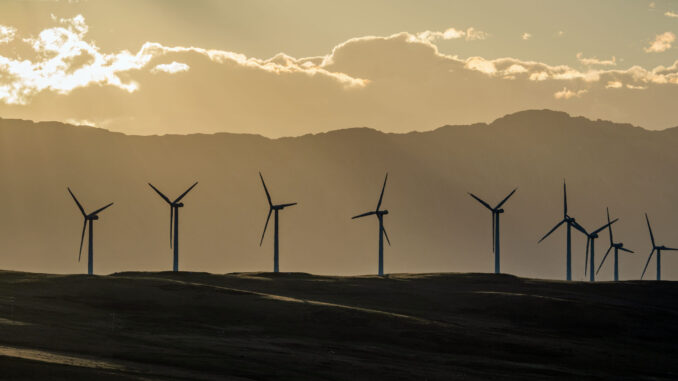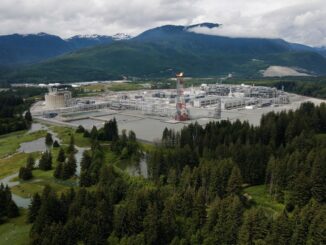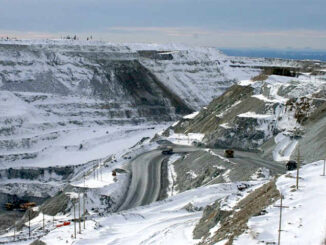
ENB Pub Note: This story is from Brian Zinchuk in Canada, and we love his work. You can follow all of his work on pipelineonline.ca.
Alberta’s wind power generation fell to 7 megawatts out of a nameplate capacity of 5684 megawatts at 11:15 p.m. MST the night of Wednesday, Nov. 26.
That’s 0.12 per cent of nameplate capacity, or 12 ten-thousandths of capacity.
Those numbers are according to the Alberta Electric System Operator (AESO), which posts minute-by-minute data of every generating unit on the Alberta grid.
At the moment, 97 per cent of Alberta’s power produced within the province was coming from natural gas-fired generation, be it cogeneration, combined cycle, simple cycle or gas-fired steam (former coal plants converted to natural gas.)

This was Alberta’s power generation at 11:15 p.m. on Nov. 26 MC is maximum capacity in megawatts, TNG is total net to grid, and DCR is dispatched and accepted contingency reserve. AESO
That’s significant, as the federal Clean Electricity Regulations mean to do away with fossil fuel-fired power generation unless it is equipped with carbon capture and storage of an efficiency far higher than what has been achieved at SaskPower’s Boundary Dam Integrated Carbon Capture and Storage Project near Estevan.
Without natural gas-fired power generation providing that 97 per cent of output, nearly every single light, electric heater, furnace fan, street light, factory, pumpjack, water pump and more would have gone out in Alberta at that moment. The temperature in Edmonton was -10 C, with Calgary at -14 C at the time.
Remarkably, Alberta was able to keep its power rates from spiking, with a price of just $63.2 per megawatt-hour. Often when wind and solar combine to flatline at the same time, that price will float up to or even hit the theoretical $999.99 per megawatt-hour.It was even exporting a small amount of power to British Columbia, while importing the maxium 154 megawatts possible to Saskatchewan. The flow to both Montana and British Columbia stayed in the low numbers with small fluxuations.
Wind output stayed under 15 megawatts for at least an hour.
Expansion of Alberta’s natural gas fleet appears to have made all the difference, as similar circumstances in the previous few years would have likely resulted in grid alerts across the province.
As X account @ReliableAB, which provides regular logging of the Alberta grid, noted, “No wind, no supply issues, and no maxed out pool prices. Reliability makes a difference.”
No wind, no supply issues, and no maxed out pool prices.
Reliability makes a difference. pic.twitter.com/0pJHSuYceS
— Reliable AB Energy (@ReliableAB) November 27, 2025
Got Questions on investing in oil and gas?
If you would like to advertise on Energy News Beat, we offer ad programs starting at $500 per month, and we use a program that gets around ad blockers. When you go to Energynewsbeat.co on your phone, or even on Brave, our ads are still seen. The traffic ranges from 50K to 210K daily visitors, and 5 to 7K or more pull the RSS feeds daily.










Be the first to comment